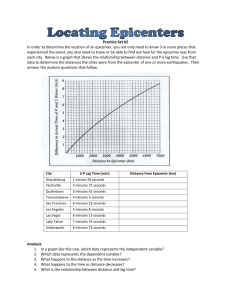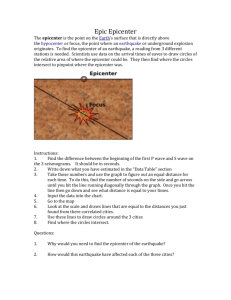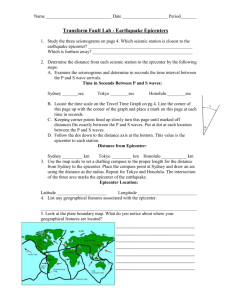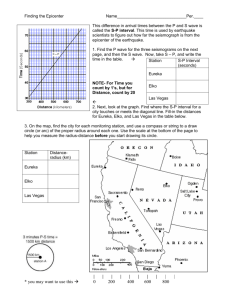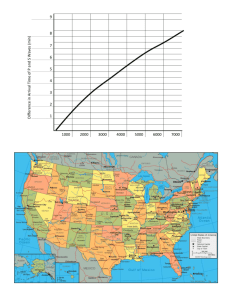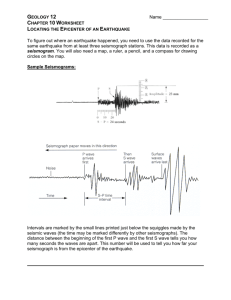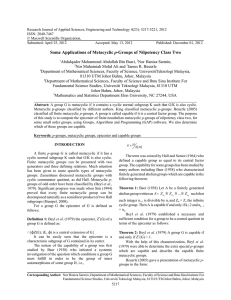17.1 Epicenter/Hypocenter Determination Techniques Generally
advertisement
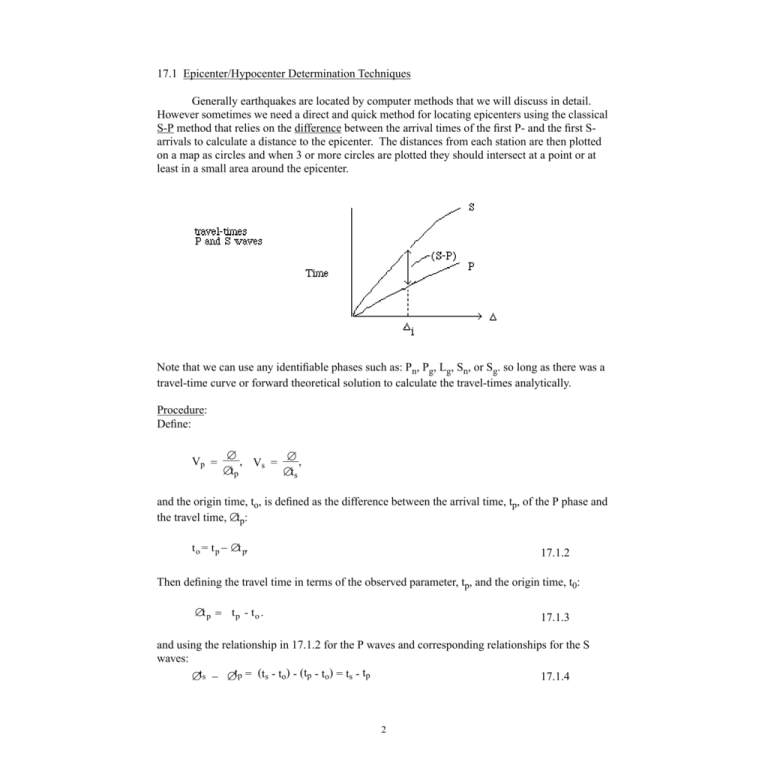
17.1 Epicenter/Hypocenter Determination Techniques Generally earthquakes are located by computer methods that we will discuss in detail. However sometimes we need a direct and quick method for locating epicenters using the classical S-P method that relies on the difference between the arrival times of the first P- and the first Sarrivals to calculate a distance to the epicenter. The distances from each station are then plotted on a map as circles and when 3 or more circles are plotted they should intersect at a point or at least in a small area around the epicenter. Note that we can use any identifiable phases such as: Pn, Pg, Lg, Sn, or Sg. so long as there was a travel-time curve or forward theoretical solution to calculate the travel-times analytically. Procedure: Define: Vp = ∆ , V s = ∆ , ∆tp ∆ts and the origin time, to, is defined as the difference between the arrival time, tp, of the P phase and the travel time, ∆tp: t o = t p − ∆t p. 17.1.2 Then defining the travel time in terms of the observed parameter, tp, and the origin time, t0: ∆t p = t p - t o . 17.1.3 and using the relationship in 17.1.2 for the P waves and corresponding relationships for the S waves: ∆ts − ∆tp = (ts - to) - (tp - to) = ts - tp 17.1.4 2 The ratio of Vs to Vp in terms of the travel times of the phases is then: Vs ∆ t p = Vp ∆ t , s 17.1.5 then letting (S-P) = ∆ts - ∆tp, the equation for S - P time is: (ts - tp) = ∆ts - ∆tp = ∆ − ∆ = ∆ V1 - 1 Vp s Vp Vs 17.1.6 is rewritten as: ∆ = (ts - tp ) Vp Vs Vp - Vs 17.1.7 which be solved for the epicentral distance, ∆. This expression thus gives an estimate of the distance between a station and the epicenter and is further defined to include the velocity terms as a constant, k; ∆ = (ts - tp) Vp Vs = (ts - tp) k Vp - V s 17.1.8 If we know Vp and the Vs , then the distance can be independently determined. Vp Vs The quantity, V - V is sometimes called the VPVS velocity. What are typical values for p s crustal conditions? Hence, for the ith-station, a distance, ∆i, can be calculated. After determining at least three distances from three stations (in order to get an intersection), circles of radius ∆i are plotted on a map. The intersection of the three circles is the epicenter. Note that focal depth is not determined in this method and we only detemine the epicenter and origin times. What happens when you have more than three stations? See next section. 3
